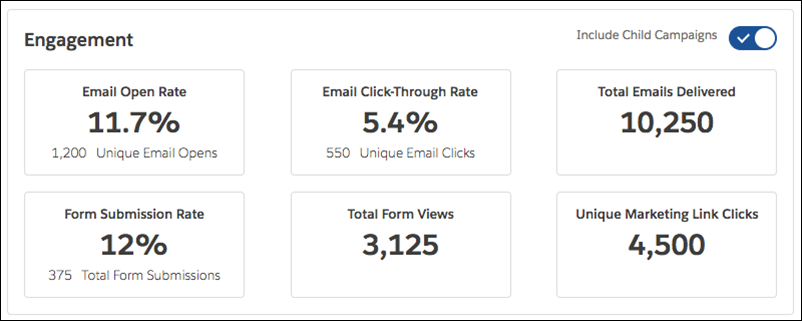The different campaign objects has caused confusion in the past and we’re often asked to explain the difference and recommend ways to use both systems for campaign reporting. Even with the sync, it’s important to remember that the definition of campaigns remains the same for each system:
- Pardot is the first campaign that a prospect engages with i.e their first-touch
- Salesforce records the multiple engagements that prospects have with you i.e. multi-touch
The sync will force you to create campaigns from the Salesforce side which makes them easier to manage, but you must still associate all your marketing assets with the right Pardot campaigns and use automations to push prospects into corresponding Salesforce campaigns to get the reporting you need. See our blog article here on the difference between Pardot campaigns and Salesforce campaigns.
What’s changing?
You can enable the campaign sync in your account settings. Then you will need to connect all of your current Pardot campaigns with corresponding Salesforce ones before you can fully enable the feature. Once connected, all your campaigns will then be managed from Salesforce i.e. if you create a new campaign in Salesforce it will automatically sync to Pardot. From an admin point of view, that’s great because you no longer need to create campaigns in both places.
What to look out for
There are still some implications to consider before you make the switch. Before enabling, I would recommend reviewing your current set-up to determine how it will impact your business:
- The number of campaigns you already have in Pardot and Salesforce and how out of sync they already are – this will let you know how much work is involved in connecting your current campaigns!
- Your current use of Salesforce campaigns – Salesforce campaigns can also be used outside of marketing so you will want to consider whether certain campaigns (via record types) should be excluded from syncing with Pardot or not
- The ability for marketing users to create campaigns in Salesforce – do they have a Salesforce licence and permission to create campaigns? …and do they know how to?
- Folder permissions in Pardot; at the moment all synced Salesforce campaigns will save in the ‘Uncategorized’ folder – do all marketing users have access to that folder?
- Whether your data exists in both Pardot and Salesforce – only leads or contacts will be added to your Salesforce campaigns so you need to be aware of that in any reporting
What are the benefits?
The main advantage of enabling the feature is to save your marketers time and to give them more sophisticated reporting in Salesforce. It’s a chance for you to review your current use of campaigns in both systems, streamline your processes and define your reporting needs:
- When should campaigns be created? For what purpose or marketing activity?
- Should there be a campaign hierarchy to report on specific marketing tactics within an overall marketing initiative?
- Should there be a consistent naming convention to report across multiple campaigns?
- Are you associating all marketing assets with the right campaigns in Pardot?
Connecting your campaigns will give you richer engagement history in Salesforce – alongside the campaign object in Salesforce you will be able to see the Pardot engagement metrics that relate to that marketing activity giving your Salesforce users greater visibility of campaign success:

These engagement metrics are held in fields so you can add them to the campaign page layout and use them in other reporting. Connected Campaigns also paves the way for reporting on multi-touch attribution models in Salesforce. But reporting is only as good as the data that goes in; once you properly plan for your campaign structure and add the right data through automation, you can unleash the power of campaign and ROI reporting in Salesforce and enable the multi-touch attribution models from Pardot.
If you want to discuss your requirements before enabling the feature, get in touch with us to find out how you could improve on your campaign reporting.

